I ran into a Old Exam question that solved by our TA. anyone could help me?
when we create SLR(1) about S--> aSb | a grammar, one of the item set LR(0) is like as:
{ S-->a.Sb, S-->a., S-->.aSb, S-->.a}
about extracted rule from above set, which of them is True:
a) one reduced and 2 shift and 1 goto is produced.
b) one reduced and 2 shift and2 goto is produced.
c) two reduced and 1 shift and 1 goto is produced.
d) when we input a, we have conflict.
anyone could say why (3) is correct? some detail about this question ?
EDIT: i think Goto refer to Action and goto tables.
